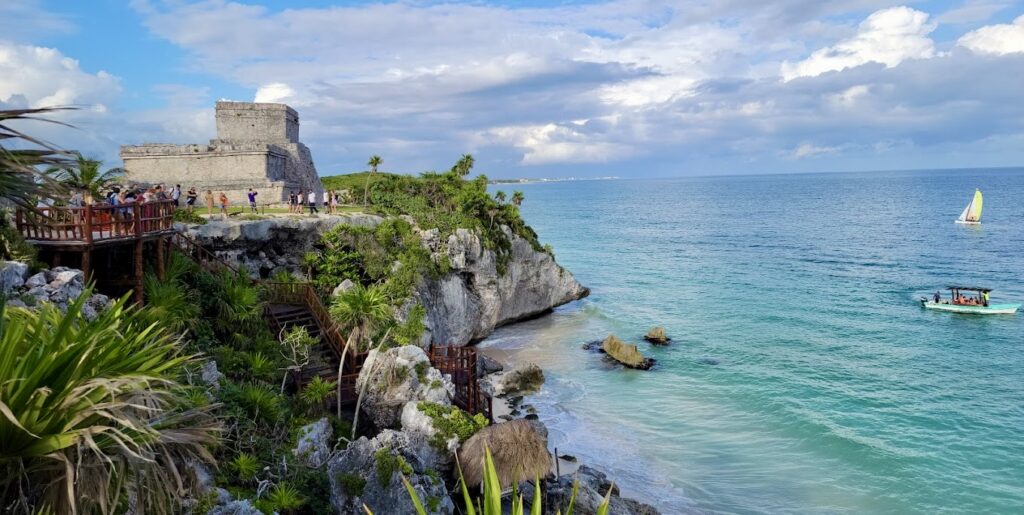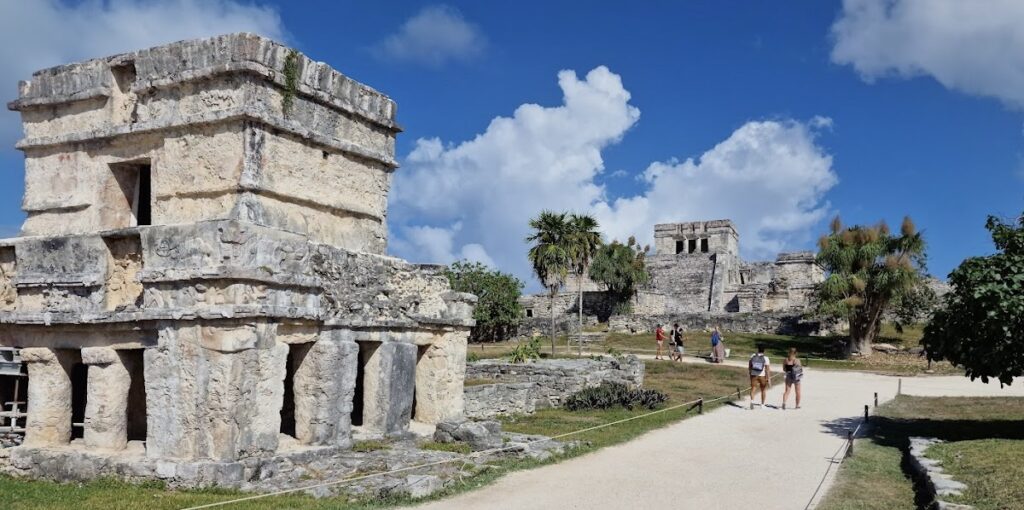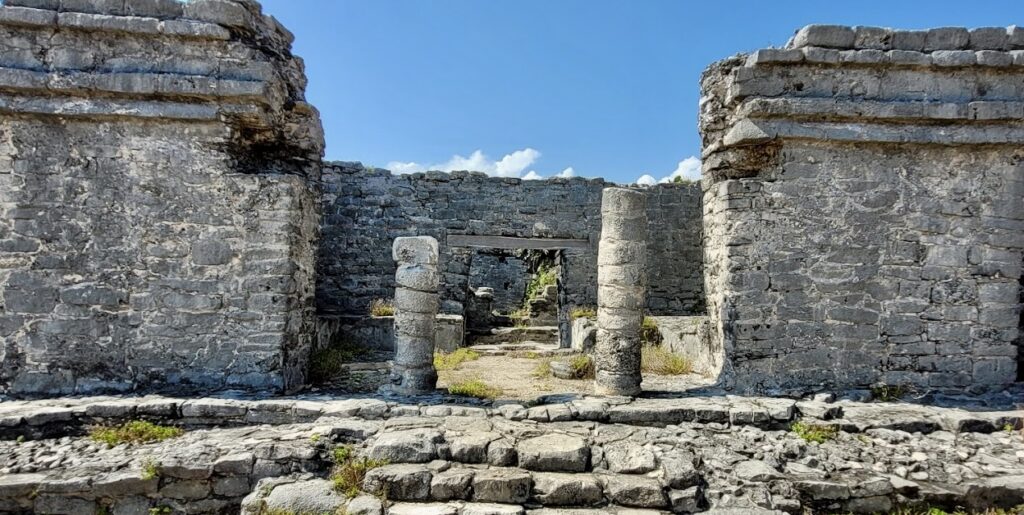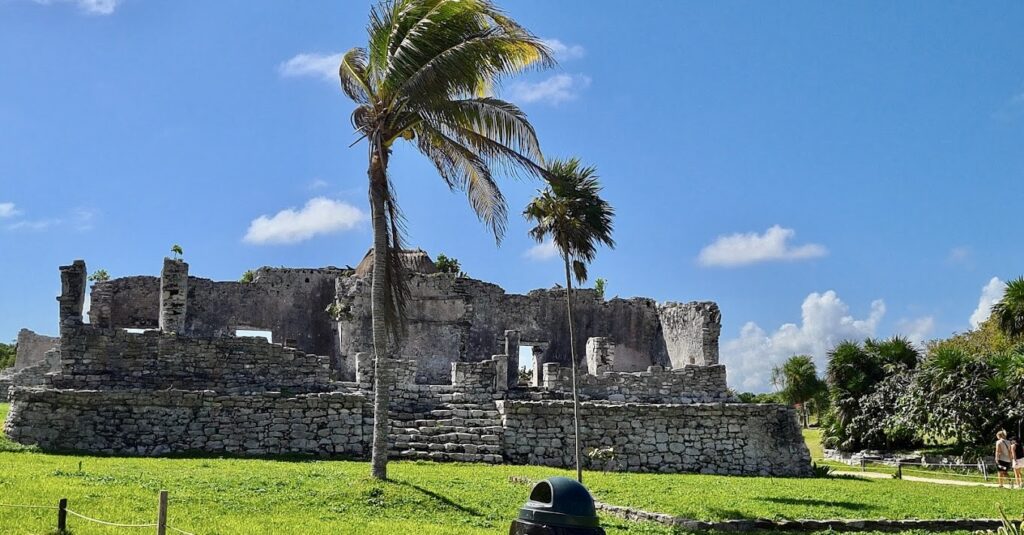



About
When considering which Mayan ruins to visit on your Yucatan vacation, the Tulum Archaeological Site should be at the top of your list!
Archaeologists estimate that the Mayans built the structures around 564 AD based on the earliest document. During the 13th and 15th centuries, Tulum was a bustling port and an integral link between Mesoamerican cultures.
Tulum translates to "wall" or "palisade," alluding to the preserved 39' walls of El Castillo. The views atop are a photographer's paradise, with the turquoise Caribbean Sea as the backdrop.
Other ruins to explore are the Temple of the Wind God, the House of the Halach Uinic, and the Great Palace. The Mayans built these limestone structures for ceremonial and observational purposes. When you visit, you'll marvel at their architectural and engineering skills.
You'll pass some of the area's top cenotes on your drive from Playa del Carmen to this iconic landmark. The first you'll encounter heading south is Rio Secreto, which offers caves and clear river tours. Next up is Yal-Ku, which is near Akumal and has shallow waters and paths. Closer to Tulum is the popular Two Eyes Cenotes that attracts snorkelers and divers.
Exploring the Tulum Archaeological Site is an immersive experience of history and the Mayans' culture, making it a must on your vacation.
Tulum Archaeological Site: Fun Facts & Cool Features
If you're a photographer or seeking the ultimate selfie location, make a beeline to the El Castillo observatory. In addition to breathtaking views, the windows align with the sun's solstices. Such engineering is an example of the Mayans' fascination with and knowledge of astronomy.
The temple is equally intriguing, with three entrances, serpentine columns, and two zoomorphic masks in the corners.
Tulum is one of the few fortified Mayan cities, which will appeal to history and military buffs. The formidable walls are 16' tall and 26' thick, reflecting a well-planned layout against sieges. Many archaeologists believe the walls weren't just to thwart attacks but a barrier between social classes. Only the ruling class and religious elite lived in the fortified city, while commoners dwelt outside.
As alluded to earlier, ancient Tulum was a significant crossroads of trade. Yucatan merchants traveled by land and sea to sell turquoise, jade, obsidian, textiles, ceramics, and other commodities.
The ecocentric theme parks between Playa Del Carmen and Tulum make planning a visit special. When you need refreshing with a zip line or aquatic adventure, check out Xel-Ha Park and Xcaret Park. Each has unique offerings but both promise family-friendly fun!
Also convenient are the delicious eateries in Tulum. Discuss your exploration and discoveries with a meal at places like La Negra Tomasa and Casa Banana.
Visiting Tulum's archaeological zone on a Playa del Carmen getaway offers riveting stories, ancient ruins, and breathtaking vistas of the Caribbean.
Getting There
Here’s a step-by-step guide for driving from Playa del Carmen to the Tulum Archaeological Site:
- Head south on Carretera Federal 307(also known as the Cancun-Tulum Highway).
- Follow Highway 307 for 63 kilometers (about 39 miles).
- Look for signs directing you to the Tulum Archaeological Zone.
- Before entering the Tulum area, turn left at the signposted entrance for the destination.
- Follow the access road to the parking area.
- Address: Carretera Federal Tulum 307, 77780 Tulum, Q.R., Mexico.
Cost
Here are the costs associated with visiting the Tulum Archaeological Site:
- Entrance fee for adults: MXN 95
- Additional fee for video cameras: MXN 45
- Free entry for Mexican citizens on Sundays
- Guided tour options are available at an additional cost
Prices are subject to change; check their website for updates.
Local Tips
- The off-season is less busy and more relaxed.
- Wear comfortable shoes and bring water and snacks.
- Pets are not allowed.
- Pack a bathing suit to explore nearby beaches.
- Visit in the morning to beat the heat and crowds.
